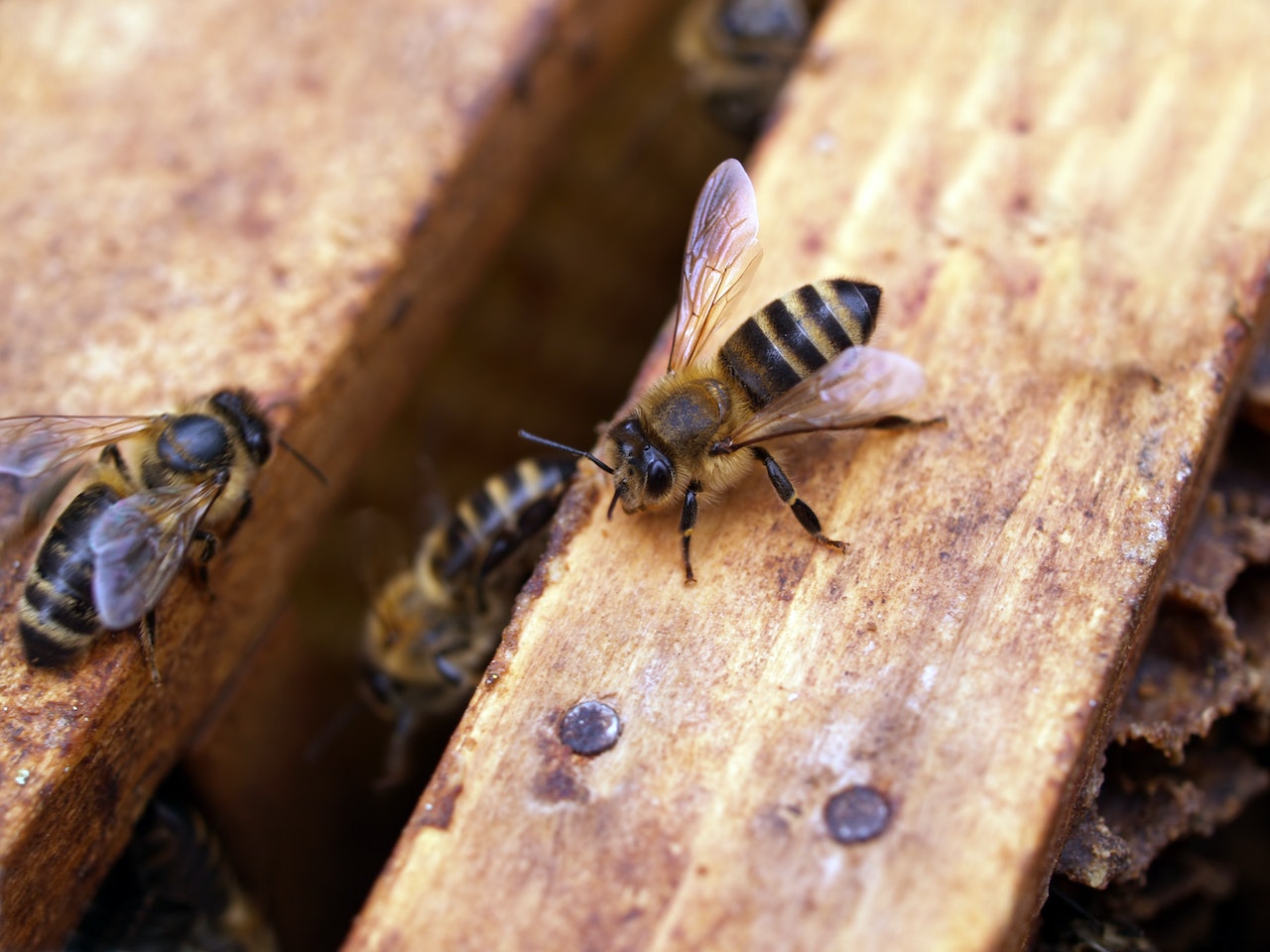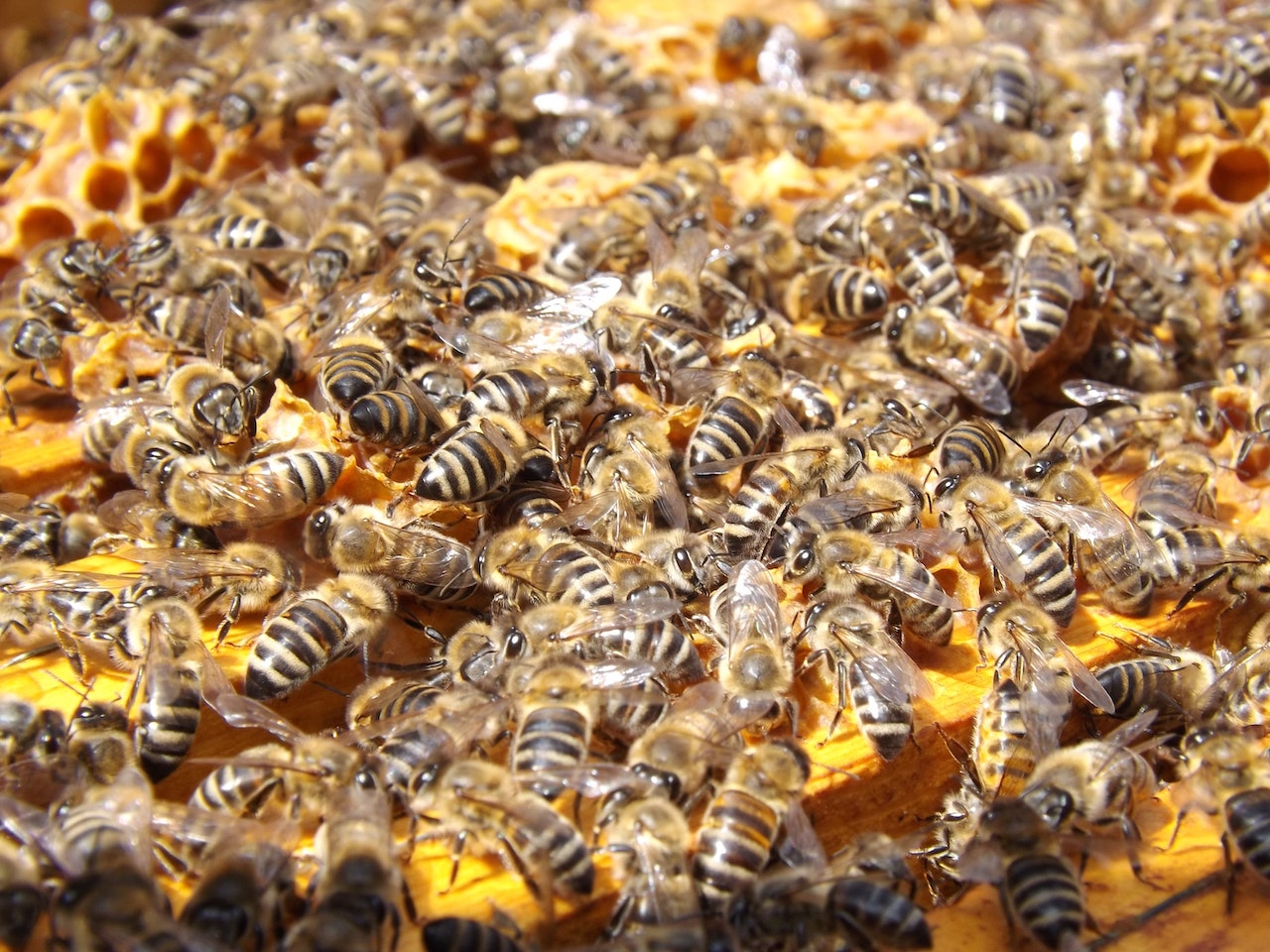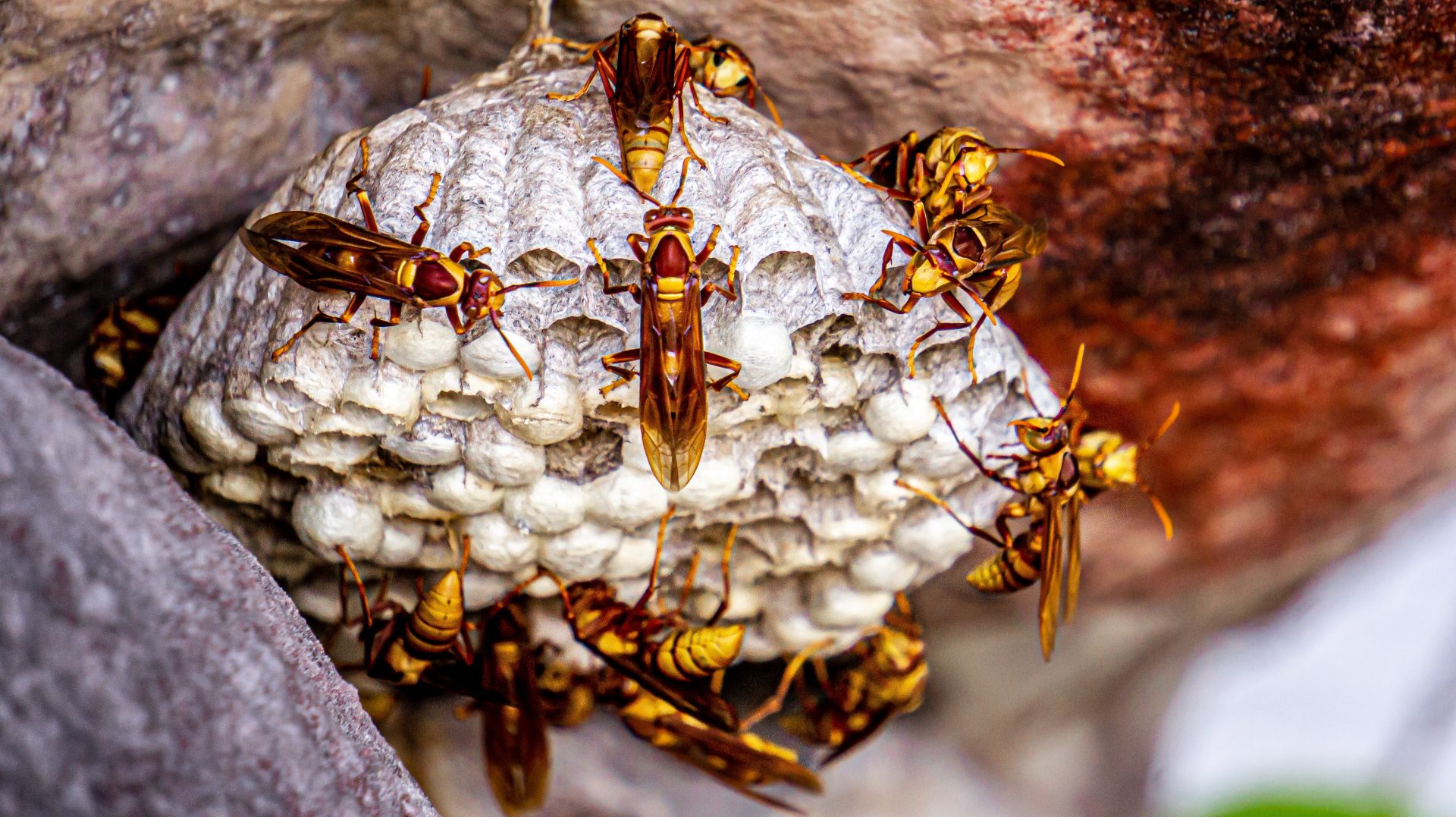
In Southern Louisiana, bees and wasps, including hornets (which are a type of wasp), are types of stinging insects. They are busiest in late summer and early fall when their colonies are biggest, and worker insects are seeking food. They also play an important role in our ecosystem both as pollinators and predators of insect pests. It’s important to learn about the types of bees and wasps buzzing about in our area to learn which ones are dangerous and how to avoid being stung.
Eight Types of Stinging Insects in Southern Louisiana
In the New Orleans area, wasps, yellow jackets, hornets, and similar insects are common pests, and their stings can be more than just annoying. They can actually be dangerous, sending over 500,000 people to the emergency room each year, especially those with allergies. It’s crucial to recognize that some stinging insects are more perilous than others. To assess the risk to your family, identifying the specific type of insect, particularly for wasps and yellow jackets, is essential. Here are the types of stinging insects you might encounter in Southern Louisiana.
1. Bald-faced Hornets
Bald-faced hornets are black with mostly white faces. They are found all over the U.S., including here in Southern Louisiana. They are most active in late summer and early fall when their populations are the largest. You can spot a bald-faced hornet infestation by looking for a nest, typically hanging above the ground, with worker hornets flying around it and nearby.
Bald-faced hornets are highly aggressive and will attack anything that comes near them, unlike some other stinging insects that usually only sting when they feel very threatened. They can sting repeatedly, unlike honey bees and some other stinging insects that can only sting once before losing their stinger.
If you discover a bald-faced hornet nest on your property, do not try to remove it yourself, as it can make the hornets sting. Avoid DIY pest control for bald-faced hornets at all costs. Instead, get in touch with a licensed local pest control professional for safe removal. They typically inspect the nest during the day and remove it at night when most of the hornets are inside to ensure a thorough removal process.
2. Bumblebees
Bumblebees are helpful insects because they pollinate crops and plants, but they can be harmful because they sting. And unlike honey bees, bumble bees can sting more than once. They typically nest in the ground but can also be found above ground near patios or decks. Occasionally, they construct their nests in attic soffits.
Bumblebees are aggressive when protecting their nests. If you come too close, they will chase you for a while to make sure you stay away. And bumblebees are found across the U.S., including here in Southern Louisiana.
Want to remove bumblebees from your home or property? Try prevention first! Prevent bumblebees by checking for nesting spots and getting rid of places where they might hide. Since bumblebees can sting when they feel threatened, it’s better to hire a professional pest control service rather than get rid of bees yourself.
3. Carpenter Bees
Carpenter bees look similar to bumble bees, but without yellow markers on their abdomens. Also, unlike bumblebees, they are solitary and do not live in nests or colonies.
Male carpenter bees don’t sting, but females might sting in rare cases if they feel threatened. However, carpenter bees can cause structural damage to your home or property over time if left untreated, especially if they repeatedly bore holes for nesting throughout the property including your home, deck, and fence.
Need to eliminate carpenter bees? You can try and apply products to the holes in the wood where the bees are nesting, but carpenter bee control can be tricky, so it’s best to contact a licensed pest control expert. A local exterminator can inspect your property for nests and choose the right treatment method for getting rid of carpenter bees.
4. European Hornets
European hornets are found in 31 states, including Louisiana. They are also known as giant hornets or brown hornets. They are larger than yellowjackets, and they are active at night.
These types of hornets build their nests in various places like hollow trees, barns, outbuildings, the empty walls of houses, attics, and deserted beehives. They are dangerous because they sting to catch prey or defend their colonies. Hornets can sting multiple times in an attack, and they have smooth stingers that may not always come out after a sting. They can also damage trees and shrubs on your property by peeling off bark to access sap and using the bark fibers for nest construction.
To deter European hornets, switch outdoor lights to yellow bulbs and quickly clear fallen fruit from trees, as it attracts them. If you suspect a European hornet issue or locate a nest, contact a licensed local pest control expert. Avoid DIY removal. Professionals usually inspect in the evening when European hornets are active.
5. Honeybees
Honeybees are social insects that are important to the environment because of their role in pollination. The type of honey bee found in Southern Louisiana is the European honey bee, which is much less aggressive than the Africanized honey bee, aka “killer bee.”
These types of honeybees swarm when their colony gets too large, usually once every 12 months. They are not aggressive, and don’t go looking for things to attack. However, they’re defensive and will only attack when they believe their colony is in danger.
Honeybees are good for the environment. Take steps to manage honey bees on your home or property, especially around children or people with allergies. If you need more information or assistance with honey bee treatment and management, consult a local pest control professional.
6. Mud Daubers
Mud daubers are a type of wasp that build their nests in mud. They’re found in Southern Louisiana and across the U.S., and their appearance varies.
Mud daubers are not aggressive and rarely sting. They also don’t defend their nests, and are are helpful because they keep spider populations in check. The issue is that once they vacate their nests, more dangerous wasps take over as tenants.
Want to remove mud daubers? While they’re not usually harmful, other more dangerous wasp species may take over their old nests. It’s best to let a licensed pest control expert handle mud dauber nest removal. They can also help prevent mud daubers by sealing up cracks and holes in buildings.
7. Paper Wasps
Paper wasps are named for the paper-like material they use to construct their nests. They are also known as umbrella wasps due to the shape of their unique nests. They like to build nests in residential yards. Let’s hope it’s not your yard!
Although not naturally aggressive, paper wasps will sting when disturbed or if their nest is in danger. Paper wasp stings are quite painful and carry the same risk of allergic reactions as stings from other insects.
For paper wasp issues or nests on your property, reach out to a licensed pest control expert for treatment. Avoid trying to remove paper wasp nests yourself, as there’s a good chance they’ll defend it by stinging you.
8. Yellowjackets
Yellowjackets are most active in the late summer and early fall when their colonies are at peak size. These yellow and black insects are territorial and will sting if they are threatened. They eat sweets and proteins, which means they are frequent uninvited guests at your outdoor barbecues and picnics.
Yellowjackets live anywhere we do. They make paper nests from chewed-up wood fibers, often found in the ground or in places like eaves and attics. Hopefully, not your attic!
Looking to get rid of yellow jackets yourself? This is a bad idea because they sting when threatened. A local pest control company has the special equipment and safety precautions necessary to help remove a yellow jacket nest from your home or property.

How to prevent bee and wasp stings
With the help of our friends at Pest World, here are six stinging insect prevention tips to keep in mind to keep you and your family protected:
1. Stop bees and wasps from getting in by sealing up cracks and gaps around your home. Check for nests in and around your house, like in attics, chimneys, porch lights, decks, and eaves. Regularly seal any openings you find to keep pests out.
2. Cover your food. When you’re outdoors, like at a picnic or BBQ, cover your food to avoid attracting bees and wasps. Also, make sure trash cans have lids that fit tightly.
3. Steer clear of strong fragrances. To keep away stinging insects like yellowjackets, use less perfume or cologne when you’re outside for a while. Pick unscented shampoos, soaps, lotions, and sunscreen if you can.
4. Stay calm and safe when a stinging insect is around. You may want to instinctively swat or panic by waving your arms. But these actions can make things worse. Instead, stay calm, walk away slowly, and the insect will likely leave you alone. If you do get stung, remove the stinger carefully and get medical help if needed, as reactions can be serious sometimes.
5. Choose your outfits wisely. Skip dark colors and flowery prints because they draw in stinging insects. Opt for closed-toe shoes, especially when you’re in grassy spots, as bumblebees and certain hornets like to nest there.
6. If you spot a stinging insect nest on your property, get in touch with a professional pest control company right away. They’ll check your home, identify the insects, and suggest a pest control plan.

What to do if you get stung by a bee or wasp
If you or a loved one get stung by a bee or wasp, the CDC recommends you take the following steps:
1. Be sure that you or they do not have an allergic reaction.
2. Wash the site with soap and water.
3. Remove the stinger using gauze wiped over the area or by scraping a fingernail over the area. Never squeeze the stinger or use tweezers.
4. Apply ice to reduce swelling.
5. Do not scratch the sting as this may increase swelling, itching, and risk of infection.
For people with severe insect allergies, carry an auto-injectable epinephrine device (EPI pen). Learn how and when to use it, and replace it before it expires. If you’re having a serious reaction to a bee sting that suggests anaphylaxis call 911.
Expert pest control for bees, wasps, and hornets near you
Stinging insects keep pest control professionals busy this time of year. A local professional pest control company like LaJaunie’s Pest Control can help you with safe bee and wasp control and removal. Give us a call at 985-859-7378 or contact us here to learn more.